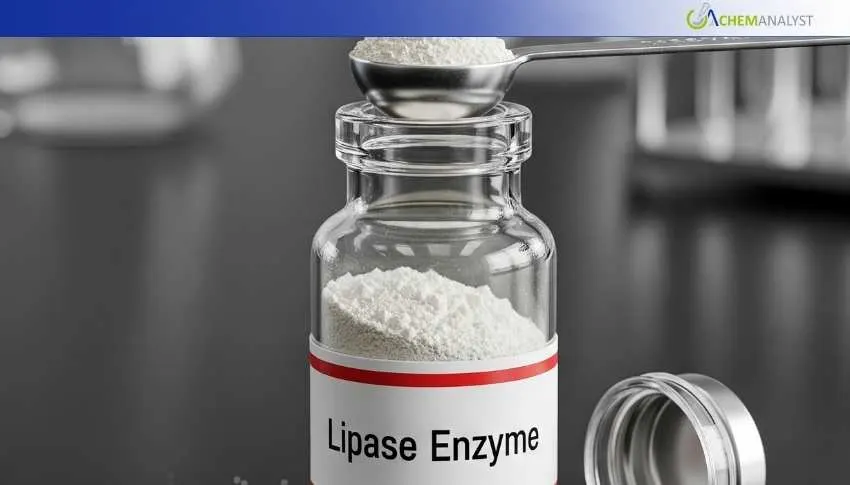Welcome To ChemAnalyst

Lipase enzyme prices in the U.S. continued their steady upward trajectory throughout August 2025, supported by constrained global supply and strong domestic demand. Limited shipments from Asia, higher freight charges, and rising input costs tightened availability, while logistical delays within the U.S. further pressured distribution. On the demand side, the food and beverage industry remained the primary consumer, with bakery, dairy, and edible oil segments driving growth, alongside consistent use in animal feed for improved digestibility. The pharmaceutical sector also contributed with specialized applications in drug formulation. Analysts expect the bullish trend to persist, as supply remains tight and seasonal demand from food processors builds, reinforcing the likelihood of elevated price levels in the near future.
The U.S. market for lipase enzyme recorded a consistent upward trend during August 2025 due to a combination of supply-side issues and strong demand from major downstream industries. Market sources confirm that this continued import and domestic price increase is both an indication of tightening supply and a structural reinforcement of consumption trends, paving the way for sustained bull-market conditions in lipase enzyme prices and the demand side in the short term.
Supply side, international trade disruptions have placed U.S. lipase enzyme prices under upward pressure. Reduced shipping volumes from major Asian suppliers, such as China and India, and restricted supply in the domestic market. Exporters from these nations witnessed higher freight costs, shortages of containers, and periodic maintenance in lipase enzyme plants, generally curbing supply flow to North America. U.S. distributors indicated longer lead times and decreasing inventory cushions, making customers increasingly dependent on spot buying for lipase enzyme at higher costs. In addition, increasing input prices for fermentation substrates and energy also added to the cost of production inflation, which was transmitted to downstream into the U.S. market.
Domestically, supply constraints were amplified by logistical bottlenecks. Trucking shortages in certain regions of the U.S. in the past months continue to slow the distribution of specialty enzymes, including the lipase enzyme to food and feed processing hubs. As a result, industrial buyers faced greater urgency in securing volumes, which reinforced price resilience.
On the demand side, various industries sustained a strong offtake momentum for lipase enzymes. The U.S. food and beverages sector—particularly bakery, dairy, and edible oils—exhibited consistent dependence on lipases for flavor development, strengthening and fat breakdown optimization. Increasing consumer demand for more functional and healthy foods has continued to propel enzyme demand in this segment. Additionally, the animal feed sector was another strong growth promoter, with nutrition formulators increasingly depending on lipase enzyme to improve feed digestibility as well as enhance the performance of livestock in a bid to augment output efficiency.
The pharmaceutical sector also led the bullish trend, with strengthened uses of lipase enzyme in pharmaceutical drug development and biocatalysts. This niche demand segment, though smaller in volume compared to food and feed, facilitated strengthened value realization for suppliers.
In the short term, market analysts predict the upward trend in lipase prices to continue in the weeks ahead. With world supply still not normalized and fundamentals for demand still holding, the U.S. market can expect higher price levels for lipase enzyme in the short term. Pre-Q4 procurement driven by seasonal needs, especially from holiday-consumption peak-driven food-processing firms, may also support demand. Meanwhile, uncertainty over freight availability and producers' recovery of cost indicates sustained price firmness instead of correction. Industry analysts point out that unless major supply relief happens, the bullish scenario is likely to continue into the near term.
We use cookies to deliver the best possible experience on our website. To learn more, visit our Privacy Policy. By continuing to use this site or by closing this box, you consent to our use of cookies. More info.
